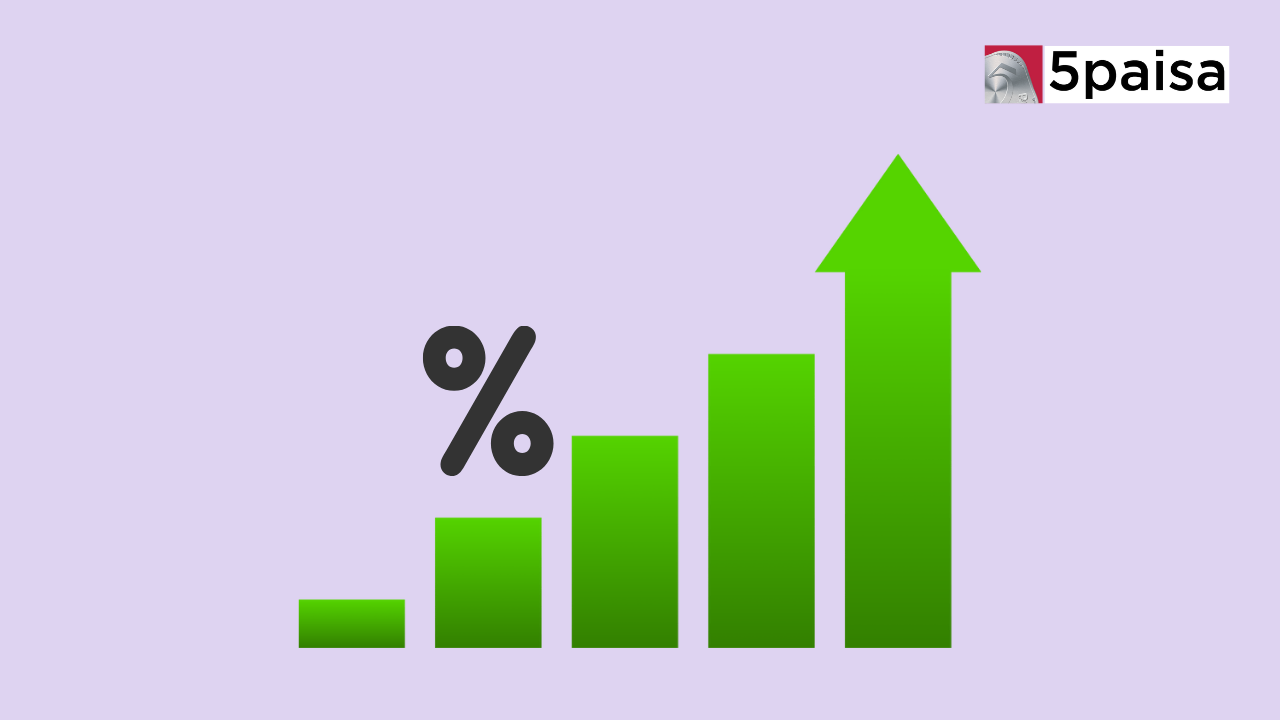Top Growth Stocks Trading at a Discount
Top Public Sector Unit Banks to Invest

Last Updated: 11th August 2023 - 06:41 pm
The backbone of any nation's economy is its financial sector. In the aftermath of India's independence, there was a pressing need to construct a sturdy financial framework capable of accommodating the expansion of credit. In response, the Indian government acquired and established public sector banks to effectively tackle this challenge.
This empowered them to provide an extensive array of supportive initiatives and extend interest rates lower than those offered by private banks. In the forthcoming sections, we will delve into an analysis of India's premier PSU banks. Continue reading to enhance your understanding of these institutions.
Industry Overview
Innovation in Service
• In the recent period, technological innovations have led to marked improvements in efficiency, productivity, quality, inclusion and competitiveness in extension of financial services, especially in the area of digital lending.
• Digitalization of Agri-finance was conceptualized jointly by the Reserve Bank and the Reserve Bank Innovation Hub (RBIH). This will enable delivery of Kisan Credit Card (KCC) loans in a fully digital and hassle-free manner.
• In Union Budget 2023, the KYC process will be streamlined by using a 'risk-based' strategy rather than a 'one size fits all' approach.
Business Fundamentals
• Digital modes of payments have grown by leaps and bounds over the last few years. As a result, conventional paper-based instruments such as cheques and demand drafts now constitute a negligible share in both volume and value of payments.
Policy Support
• The RBI has launched a pilot to digitalize KCC lending in a bid for efficiency, higher cost savings, and reduction of TAT. This is expected to transform the flow of credit in the rural economy.
• In November 2022, RBI launched a pilot project on central bank digital currency (CBDC).
• In Union Budget 2023, a national financial information registry would be constructed to serve as the central repository for financial and ancillary data.
Overview of the Best PSU Banks
1. Union Bank of India
• Key Operational Highlights
1. Notable expansion of Net Interest Margin (NIM) alongside effective control over credit costs, resulting in a 1% Return on Assets (RoA) for UNBK.
2. Substantial Year-over-Year (YoY) Profit After Tax (PAT) growth of 108% to Rs32.4bn, primarily attributed to increased other income and reduced credit costs (declined to 1% from 1.5% in Q4’24).
3. NIM saw a 15 basis points expansion, reaching 3.13% in Q1, driven by asset repricing and a 40 basis points yield increase, counteracting a 16 basis points quarter-over-quarter (QoQ) rise in deposit costs.
4. Management maintains a NIM guidance of approximately 3% for the full fiscal year FY24.
• Financial Performance
1. Healthy balance sheet growth, with 12% YoY and 1% QoQ advances expansion, bolstered by robust disbursement in the corporate segment (15% QoQ increase) and a 17% YoY growth in the retail segment.
2. Deposits registered a growth of 14% YoY and 1% QoQ, while the CASA (Current Account Savings Account) book contracted by 2% QoQ, leading to a 1.1% QoQ decline in the CASA ratio, maintaining a consistent CD (Credit-Deposit) ratio of 68% in 1QFY24.
3. Outstanding Liquidity Coverage Ratio (LCR) of 161% among PSU banks, signifying a strong liquidity buffer.
4. Asset quality improvement evident, as Gross Non-Performing Assets (GNPA) and Net Non-Performing Assets (NNPA) ratios dropped by 19bps and 12bps QoQ to 7.3% and 1.6% respectively in Q1’24. This was attributed to higher recoveries/write-offs despite an increase in fresh slippages.
• Key Risks
1. Despite improvement, fresh slippages witnessed in asset quality, albeit moderating to 1.6% of advances in Q1'24.
2. Restructuring book reduction to 2% from 2.2% in Q4, indicating some lingering stress in loan portfolios.
3. Exposure to potential shifts in credit growth dynamics, subject to broader economic conditions and industry trends.
4. Any unexpected disruptions to liquidity and capital availability might pose challenges.
• Outlook
1. Anticipated credit growth around 12% Compound Annual Growth Rate (CAGR) for 3 years.
2. Potential to further reduce credit costs, supported by a robust liquidity buffer (161% LCR in Q1’24), projecting steady state Return on Assets (RoA) of 0.9% in FY24 and expected In FY25.
3. Favourable valuation at 0.8x Price-to-Book (P/B) FY24e compared to industry peers, suggesting a relatively cost-effective investment opportunity.
4. A positive outlook, underpinned by ongoing efforts to improve asset quality, maintain healthy balance sheet growth, and optimize operational efficiency.
|
Key Financial Summary |
FY'23 |
|
EPS (₹): |
12.45 |
|
Stock P/E: |
6.16 |
|
Dividend Yield(%): |
3.27 |
|
Net NPA(%) |
1.6 |
|
ROCE(%): |
5.02 |
|
Net interest margin(%) |
3.13 |
|
Credit deposit ratio(CDR): |
68% |
|
CASA Ratio: |
35.62 |
|
Gross NPA(%): |
7.3 |
|
Capital Adequacy Ratio(%) |
16.04 |
|
Price/BV |
0.7 |
Union Bank of India Share Price
2. PNB Bank
• Key Operational Highlights
1. Sequentially flat Net Interest Income (NII) growth at Rs95bn in Q1FY24, with a 16 basis points Quarter-over-Quarter (QoQ) decline in Net Interest Margin (NIM) to 3.08% due to a 23 basis points increase in cost of funds.
2. Operating profit saw a 11% Year-over-Year (YoY) and 2% QoQ growth, supported by marginal reduction in operating expenses and a slight rise in other income.
3. Credit cost remained elevated at 1.87% in Q1FY24, resulting in a flat Return on Assets (RoA) of 0.34% compared to 0.32% in Q4FY24.
• Financial Performance
1. Advances registered healthy growth of 15% YoY and 4% QoQ, driven primarily by the RAM and corporate segments, particularly robust growth of 40% YoY in retail within RAM.
2. Deposits exhibited moderate growth at 1.3% QoQ and 14% YoY, mainly due to a 3% QoQ increase in Current Account Savings Account (CASA) growth, leading to a decrease in CASA ratio to 41.9% from 42.9% in Q4FY24.
3. Asset quality demonstrated sequential improvement, with Slippages decreasing by 40% QoQ to Rs23.90bn (1.1% annualized), resulting in improved Gross Non-Performing Assets (GNPA) and Net Non-Performing Assets (NNPA) ratios of 7.73% and 1.97% respectively in Q1.
4. PCR (Provisioning Coverage Ratio) increased by ~74 basis points QoQ to 76%.
• Key Risks
1. Elevated credit costs persist, anticipated to remain at 1.5-1.7% in FY24E.
2. Continued challenges in managing asset quality, especially evident in elevated slippages from the MSME segment.
3. Potential impact of economic and industry dynamics on credit growth and quality.
4. NIM may be influenced by fluctuations in the cost of funds and deposit repricing.
• Outlook
1. Management's guidance aims to maintain NIM at 2.9-3% in FY24E due to deposit repricing.
2. GNPA/NNPA targeted to be around 6.5%/1% for FY24, with plans to increase PCR to 90%, indicating a focus on asset quality improvement.
3. Estimated RoE (Return on Equity) for FY24E projected at 6-7%, with a strategic objective to double profitability.
|
Key Financial Summary |
FY'23 |
|
EPS (₹): |
3.04 |
|
Stock P/E: |
15.6 |
|
Dividend Yield(%): |
1.05 |
|
Net NPA(%) |
1.97 |
|
ROCE(%): |
4.11 |
|
Net interest margin(%) |
3.08 |
|
Credit deposit ratio(CDR): |
64.90% |
|
CASA Ratio: |
41.9 |
|
Gross NPA(%): |
7.73 |
|
Capital Adequacy Ratio(%) |
15.5 |
|
Price/BV |
0.7 |
PNB Bank Share Price
3. Canara Bank
• Key Operational Highlights
1. Canara Bank exceeded expectations in Net Interest Income (NII) and Pre-Provision Operating Profit (PPoP) growth.
2. NII witnessed a strong growth of 28% YoY and 1% QoQ, while PPoP grew by 15% YoY and 5% QoQ, both surpassing estimates.
3. Net Interest Margins (NIMs) remained stable at 3.05% levels, with potential future moderation anticipated.
4. Non-interest income increased by 1%, including a one-off Rs15bn PSLC income, likely not recurring in future quarters, leading to a potential decline in other income.
• Financial Performance
1. Advances growth slightly below estimates at 14% YoY and 3% QoQ, driven by the Agri and Gold Loans segments within the RAM category, which constitutes 55% of the advances book.
2. Deposits growth weak at 7% YoY and 1% QoQ, with CASA ratios remaining flat at 31%, the lowest among PSU banks, potentially exposing the bank to NIM volatility and asset quality stress.
3. Asset quality improved marginally, with GNPA/NNPA ratio declining by 20bps/16bps QoQ to 5.15%/1.57% in Q1’24, aided by higher recoveries/write-offs despite an 18bps QoQ increase in fresh slippages.
4. Management guidance aims to maintain GNPA/NNPA at approximately 4.5%/1.2% for FY24e and target a PCR of 90%, indicating sustained elevated credit costs.
• Key Risks
1. Limited room for NIM protection in a declining rate environment, as Canara Bank's Domestic CD ratio has already peaked at 74% and its liquidity management is deemed optimal.
2. Vulnerability to potential NIM volatility and asset quality stress due to relatively low CASA ratios.
3. The one-off nature of certain income components may lead to potential declines in other income in the future.
4. Challenges associated with maintaining asset quality and managing credit costs, particularly in the backdrop of elevated slippages.
• Outlook
1. Anticipation of NIM moderation in a declining rate environment, given the bank's already optimized liquidity management and relatively lower CASA ratios.
2. Guidance to maintain GNPA/NNPA at around 4.5%/1.2% for FY24e, with a focus on increasing the PCR to 90%, indicating continued elevated credit costs.
3. Canara Bank's valuation at 0.82x FY24e Price-to-Book (P/B) ratio is considered a peak for the current cycle from a valuation perspective.
4. Given the bank's specific challenges and valuation, the outlook suggests a cautious stance on Canara Bank's performance and prospects.
|
Key Financial Summary |
FY'23 |
|
EPS (₹): |
62.04 |
|
Stock P/E: |
4.67 |
|
Dividend Yield(%): |
3.61 |
|
Net NPA(%) |
1.57 |
|
ROCE(%): |
5.33 |
|
Net interest margin(%) |
3.05 |
|
Credit deposit ratio(CDR): |
74.00% |
|
CASA Ratio: |
31 |
|
Gross NPA(%): |
5.15 |
|
Capital Adequacy Ratio(%) |
16.68 |
|
Price/BV |
0.77 |
Canara Bank Share Price
PSU banks have made major contributions to increasing financial inclusion over many years, hence, these PSU banks are recognised as pioneers in the Indian banking sector. By merging, lowering NPAs, and exchanging expertise, these banks have the potential to significantly contribute to India's $5 trillion GDP.
Trending on 5paisa
Discover more of what matters to you.
Indian Stock Market Related Articles
Disclaimer: Investment in securities market are subject to market risks, read all the related documents carefully before investing. For detailed disclaimer please Click here.
 5paisa Research Team
5paisa Research Team Sachin Gupta
Sachin Gupta




